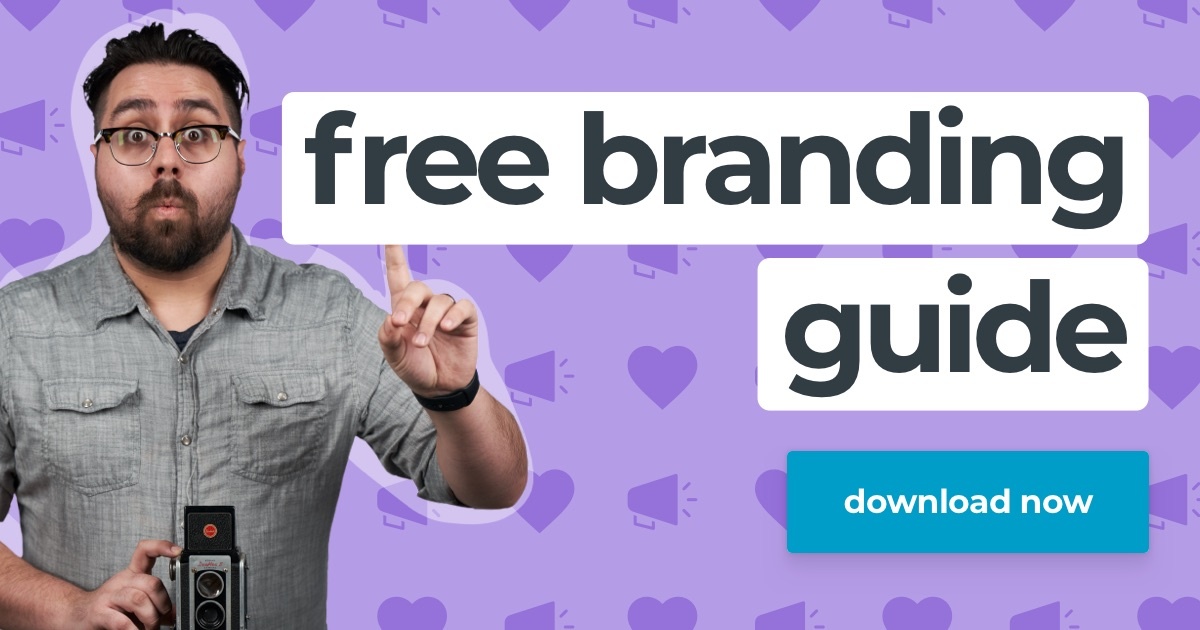Is your messaging starting to get a bit long in the tooth (so old, in fact, that it might include the phrase “long in the tooth”)? Is your web design so outdated it’s coming back around to retro? Are you still using that same logo you whipped up in Microsoft Paint in the late ’90s?
It might be time for a brand refresh.
Ok, I admit these examples are a little extreme. But my point is, it’s worth checking in from time to time to make sure your brand is still connecting with modern audiences. Times change, customers change, and to stay relevant — and profitable — brands must change with them.
What Is Branding?
In everyday conversation, we tend to associate brands with company names. We say Apple is a technology brand. Coca-Cola is a soft drink brand.
But when we marketers talk about brands, we mean so much more than names and logos.
When I mentioned those two world-renowned brand names two paragraphs up, what flashed through your mind? For Apple, you may have imagined gleaming white surfaces, minimalist design, and genius bars. For Coke, visions of polar bears and sleek glass bottles danced through your head.
What you just had was a brand experience.
Your business’s brand is the totality of what people think, feel, and remember about your business. Crucially, your brand resides in the thoughts and emotions of your customers, potential customers, and, really, everyone else.
Unless you can control minds, you can’t directly control your brand. But you can shape it by shaping the many ways your company presents itself to the public:
- Your website.
- Your logo, colors, and typography.
- Your messaging.
- Your packaging.
- Your social media presence.
- Your customer service interactions.
- (And of course) the quality of your products or services.
These elements and others combine to tell your customers a story about doing business with your company. Ideally, it’s a good story that differentiates you from your competition. If it’s not, you may be due for a refresh.
A Brand Refresh vs. Rebranding
Your organization has built up a certain reputation over the years, certain associations customers make when they see your logo, visit your website, or pick up your packaging. There’s no reason to burn it all down unless you absolutely have to.
A brand refresh is all about keeping — and improving — what works and getting rid of only those brand elements that are holding you back. A brand refresh may also involve building out elements that were neglected or ignored in the initial conception of your brand.
It’s really a form of evolution, not a complete reboot.
Rebranding is the more extreme step of rebuilding your brand from the bottom up. Out goes the old, in comes the new. You may even change your name.
I’m going to assume, for the rest of this blog post, that what you want and need is not a wholesale overhaul of your brand, but a brand refresh.
Here is how we at Media Junction typically recommend going about refreshing a brand for modern customers:
1. Take Stock of What You’re Working With
As I said, the idea behind a brand refresh is not to tear down, but to build up. That’s why I recommend reviewing all your brand assets before moving ahead with a refresh. There might be some — or even a lot — that are working well for you.
For example, maybe you have a catchy slogan your customers love. Maybe certain informative pages on your website bring back visitors again and again.
These elements are not only worth keeping in some form but learning from. They’re obviously doing something right, and you can apply that to brand elements that are not performing as well.
On the other hand, your brand assessment may turn up elements that are falling flat or that are just embarrassingly out of date. These are good areas on which to focus your refresh efforts.
2. Update Your Messaging
Is your company speaking in a way that continues to resonate with customers and potential customers? Your brand messaging — what you say — is just as important as how you say it (design, typography, colors, etc.).
We lead many of our clients through the StoryBrand BrandScript Framework because we believe it is an excellent, proven method for crafting a narrative that buyers respond to.
The BrandScript Framework is built on storytelling conventions that are as old as humanity itself. It casts your customers as the heroes of their own story and places your business in the role of an essential, trusted guide.
(Learn everything you need to know to get started on your BrandScript in our recent article, “What Is a StoryBrand BrandScript?”)
Once your BrandScript is complete, you can draw on it to create everything from captivating web copy to engaging video scripts.
3. Revisit (or Create) Your Brand Style Guide
When we help a client with a brand refresh, we often discover a hodgepodge of brand elements with little consistency from asset to asset. One webpage, for example, might strike a humorous tone, while another is dry, technical, and deadly serious. This happens more often with large organizations, where different departments don’t coordinate their marketing efforts.
A style guide brings coherency to your brand. It unifies your entire organization around a single message, visual approach, and style.
A style guide is a document for your employees, departments, and even outside vendors. (Outsourced copywriters will find your style guide immensely helpful.) It can dive down into specifics, such as:
- The exact shades of your brand colors.
- The fonts to use for online and printed material.
- The approved voice and tone for all types of messaging.
- The minutiae of written style, such as whether or not to use Oxford commas. (It matters!)
In short, your style guide is a one-stop, go-to resource for everything related to your brand. Having one will make future brand refreshes so much more efficient.
4. Spruce Up Your Website
Your website is more than just an online storefront. It may be the first (and sometimes, only) way most people experience your brand. As such, your website should reflect your brand standards through and through.
There are different ways to refresh your website; it all depends on the current state of your site (see step 1, above). You might need to improve the user experience to serve your customers better and to meet their modern expectations. Or you might need to give it a whole new look and feel.
(Check out some examples of different approaches to website refreshes here.)
Keep in mind, however, that an attractive website should not be an end in itself. The goal is to help your customers find the answers and solutions they’re looking for.
5. Modernize Your Logo
Your logo is not your brand, but it is an essential element of your visual identity. Your logo is shorthand, a unique symbol or mark that easily identifies your company in the minds of customers and potential customers.
Some big-name brands have changed their logos so subtly and progressively over the years that you may not have even noticed. Others have undertaken more drastic redesigns.
Usually, the objective is to maintain the features people love and associate with your brand while updating your logo for contemporary sensibilities. (“Out-of-touch” is not a good look for any brand.)
Our HubSpot Impact Award-winning work with Plastic Printers is a good example. As our CEO Trish Lessard described, one of our main goals for the project was to keep Plastic Printers’ history and culture in mind:
“We started the project by interviewing key individuals at Plastic Printers to learn what they liked and didn't like about their current brand. From this stage we were able to pull the key elements and phrases that have brought Plastic Printers to where they are today. When updating a brand with such an established history, it's critical to conduct interviews to hear how leaders think about the brand in their own words.”
Ready for a Refresh?
The new decade is the perfect time to update the elements of your brand. If you’re not sure where to start, we would be happy to take a look at your existing assets and make some recommendations. Click here to get in touch with one of the branding experts at Media Junction.
Written by:
Ryan VonBergenRyan spends his days (and some nights) as Head of Brand at media junction® where he manages a team of creatives. On a daily basis he solves client problems by focusing on designing great user experiences. His goals outside of work include memorizing every line of dialogue in The Empire Strikes Back.
Related Topics:




